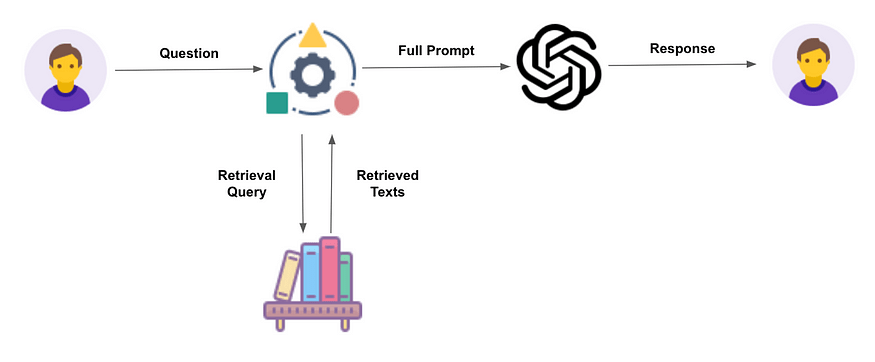React is a component-based JavaScript framework that is used for developing highly interactive UI for apps. Currently around a million users are using ReactJS as the frontend technology. For React developers, writing clean react code is must or else the chances of errors increases. We have specially made a list of React Best practices?that help developers for easy ReactJS programming.
These practices help developers gradually build their confidence and develop better UIs using React. Though react is an easy-to-use framework, it creates a mess if not handled properly. Reactjs developers should follow practices to avoid interruptions in the app?s performance. So, here we will discuss 6 ReactJs best practices for developers to follow for better frontend development. Let?s begin!
React Best Practices for Developers to Implement
No matter if you are a beginner in ReactJS field or an experienced React developer, here are the 6 react best practices you should follow while working with React:
- Break big components into small components
- Maintain a clean folder structure
- DRY code and avoid duplicate code
- Prefer using functional components
- Put CSS in JS
- ReactJS Security best practices
Let?s discuss these practices in detail.
Break big components into small components
For making components reusable, developers must break larger components into smaller components. It means rather than having multiple functions into one component, it is better to have different components of different functionality. It?s like a single function in one component.
Having separate components helps the developers to maintain, read, debug, scale and reuse the code for the long run. It keeps the project better and also makes it ready for future growth. It makes it easy for developers to add new features easily.
Maintain a clean folder structure
Organising and maintaining files and folders in your React App is important for scalability and maintainability. A better folder structure is based on the application?s size and your team.
There isn’t a universal response. especially given that this is a very divisive issue and also relies on personal preferences. However, over time, a few best practices for applications of various sizes have developed.
This excellent blog post explores five distinct app sizes and offers helpful suggestions for folder and file organisation. Keeping this in mind while creating or beginning your application might have a significant impact over time.
Try your best to keep a good structure that is suitable for your existing app & your team size, without over-engineering it.
DRY code and avoid duplicate code
Code should always be as simple and to the point as feasible. This is also true because React best practices advise you to write concise, precise code. Avoiding repetition is one method to achieve this; just don’t do anything twice (DRY) Don’t Repeat Yourself.
This can be done by looking for trends and resemblances in the code. If you discover any, it’s probable that you’re duplicating code and that there’s room to do away with overlap. Most certainly, a little rewriting would make it clearer.
This largely depends on React’s reuse principle. If you wish to add many buttons that include icons, you can just use the IconButton component as shown above rather than creating markup for each button. Even more could be accomplished by organising anything into an array.
const buttons = [‘facebook’, ‘youtube’];
return (
<div>
{
buttons.map( (button) => {
return (
<IconButton
onClick={doStuff( button )}
iconClass={button}
/>
);
} )
}
</div>
);
Prefer using functional components
Using essential features allows for simpler, shorter code, faster speed, and simpler testing of React components. Here’s an illustration:
function ShowName(props) {
return <div>Welcome {props.name}!</div>
}
The same component written in ES6:
const ShowName = ({name}) => <div>Welcome {name}!</div>
Now if we write this component as a class component:
class ShowName extends Component {
render() {
return <div>Welcome {this.props.name}!</div>
}
}
Always utilise a functional component if your class element is only displaying a method.
Put CSS in JS
When you begin the development of a project. It?s a common best practice that keeps the CSS styles in one SCSS file. By using a global prefix, name conflicts are avoided. Nevertheless, this technique might not be workable when your application grows in scope.
Many frameworks exist that let you build CSS in JS. The two widely used CSS in JS frameworks are Glamorous and EmotionJS. Here is an illustration of how to use EmotionJS in an application. Full CSS files can be created using EmotionJS for your project. Installing EmotionJS first using npm.
npm install –save @emotion/core
Next, you need to import EmotionJS in your application.
import { jsx } from ‘@emotion/core’
You can set the properties of an element as shown in the snippet below:
let Component = props => {
return (
<div
css={{
border: ‘1px’
}}
{…props}
/>
)
}
ReactJS Security best practices
Add Security to HTTP Authentication
In many apps, validation is done when a user logs in or creates a profile. This procedure should be safe because client-side authentication mechanisms might be vulnerable to numerous security flaws that may cause these methods to be destroyed in the application.
Using JSON Web Token (JWT) please avoid
Please refrain from storing JWT on local storage. Because it would be very simple for anyone to obtain a token and write by using the Dev Tools console of the browsers.
console.log(localStorage.getItem(‘token’))
You could also maintain your credentials in the state of your React application or store them in an HTTP cookie instead of localStorage.
Always switch to HTTPS instead than HTTP. Your web application will be guaranteed to have a valid certificate that may be transferred over a secure SSL network as a result.
A Broken Access Controlling
Illegal information and features of a React app may be exploited through inappropriate administration of limitations and restrictions on authorised individuals. Unauthorised persons occasionally have the ability to alter data’s main key and affect how the programme functions. Follow these guidelines to ensure protection from unwanted access:
The React code should include a role-based authentication process.
Deny feature access to safeguard your application.
Secure Against Broken Authentication
Sometimes while entering authentication details, there?s an app crash that might lead somewhere to user credential exploitation. So, removing this vulnerability can be made easy by following the below given steps:
- Use multi-factor & 2-step authorization
- You can also use cloud-base authentication like Cognito for safe access to the app.
Security Against DDoS Attacks
Once the IPs are hidden and the entire app state management contains flaws, security risks arise. This will limit the communications that the suspension of services may cause. Here are ways to avoid it:
- Restriction of rate on APIs: By applying the Axios-rate limit, it will place restrictions on the total quantity of requests made to a given IP from a particular source.
- Add API limitations at the app level.
XSS (Cross-Site Scripting)
- You can design automatic monitoring features that can clean up user input.
- Prevent harmful and inaccurate user input from entering the browser.
Concluding Words
These 6 are the basic react best practices that every React developer should follow. Many other practices can take the React application?s performance to the next level. Get in touch with us for your dream application development.
Smarsh Infotech is one of the top-notch software development service provider companies. Our team of skilled React developers will help you quickly develop your business application. So, let?s discuss your app requirements and begin the development process soon.









